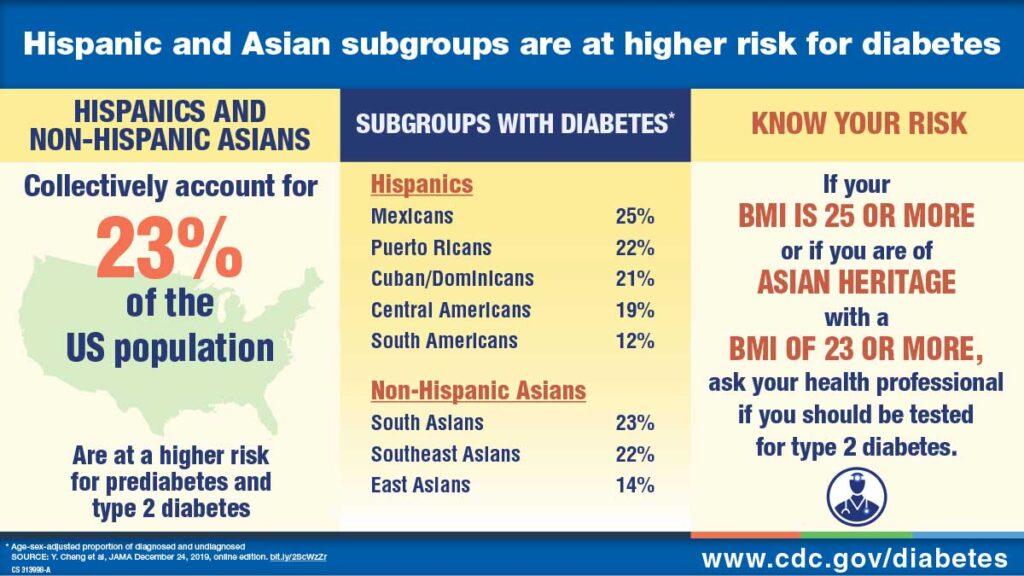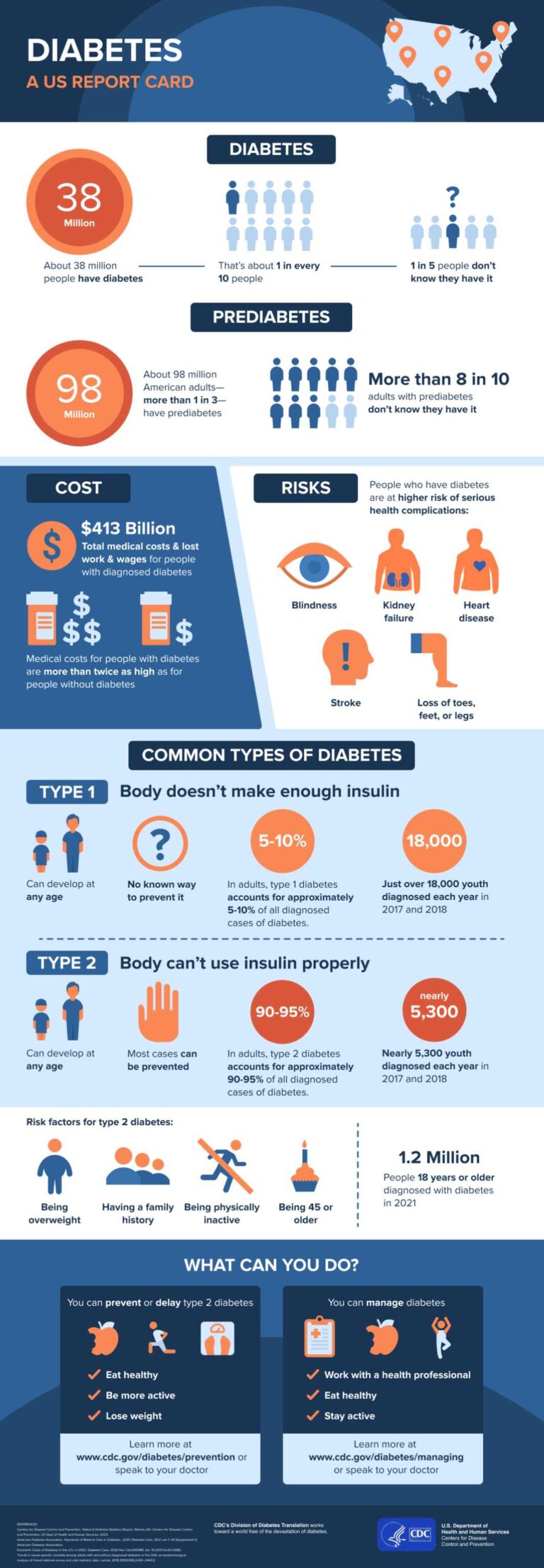Having symptoms like hot flashes, muscle pain and joint stiffness, loss of libido (sexual desire), or forgetfulness? These are some of the symptoms most frequently reported by Asian women+ on the menopause journey. This normal stage of life may provide extra motivation to focus on your health and well-being. This prescription for better health considers health risks for Asian women+ and the best ways to prevent these conditions so you can enjoy a better quality of life and perhaps live longer.
An Asian woman’s prescription for health
Focusing on your health during the menopause journey can not only help reduce the severity and frequency of menopause symptoms, but taking action now will increase the likelihood of avoiding chronic conditions (or mitigating their impact).
The Asian woman’s prescription for health includes understanding the risks and preventive steps one can take to improve overall well-being.
As an entire population, the top chronic conditions in the Asian population include:
- cancer
- heart disease
- stroke
- diabetes
- liver disease
However, the Asian community is quite diverse, and some of the risks and medical conditions that individuals experience may vary depending on their ethnic subgroup.
For example, liver cancer is more common in those who are Laotioan, and cervical cancer can be seen more frequently in Hmong women. And the prevalence of diabetes is higher in the Filipino and Indian communities.
| Ethnicity | % of the Asian Population |
|---|---|
| Chinese (not including Taiwanese*) | 22% |
| Indian | 20% |
| Filipino | 18% |
| Vietnamese | 10% |
| Korean | 8% |
| Japanese | 7% |
Source: U.S. Census
*Because of the structure of the questions in the U.S. census, it is more difficult to know the number of Taiwanese people. The Pew Research Center estimated it to be close to 700,000 for the time period of the census information above.
A study of Chinese, Filipino, and Vietnamese women found:
- Chinese women reported the highest rates of cardiovascular disease (CVD), lung conditions like asthma, headaches, and mental health issues.
- Filipino women experienced the greatest rates of cancer, seizures, tobacco use, and substance use disorder.
- Vietnamese women were found to have the highest rates of diabetes, stroke, and ulcer.
And Southeast Asian refugees have been found by the CDC to be at risk for post-traumatic stress disorder (PTSD) related to trauma experienced both before and after immigration to the U.S.
Factors that impact health
So, what factors might account for the differences? They include those that fall into the category of social determinants of health (SDOH). Among them are income and education levels, access to quality healthcare and health insurance, and language fluency.
Variations may also be seen depending on a person’s culture and health beliefs, as well as whether you were born in the U.S. or if you immigrated (57% of the Asian Community as a whole).
And, if you have immigrated, the number of years you have lived in the U.S. and how much you may have taken on the often unhealthy habits so common in America, (which have resulted in close to 33% of people being obese) also make a difference.
Additionally, bias/discrimination/racism also play a role and contribute to medical gaslighting. In turn, the negative experiences to which people are sometimes subjected may mean they put off seeking preventive care or seeing a healthcare practitioner until they are very ill.
Let’s break down some of these health risks and disparities. They include:
- Diabetes – could be impacted by menopause
- Mental health – could be impacted by menopause
- Osteoporosis – impacted by menopause
- Cancer
- Infection-related cancers
- How well medication is metabolized
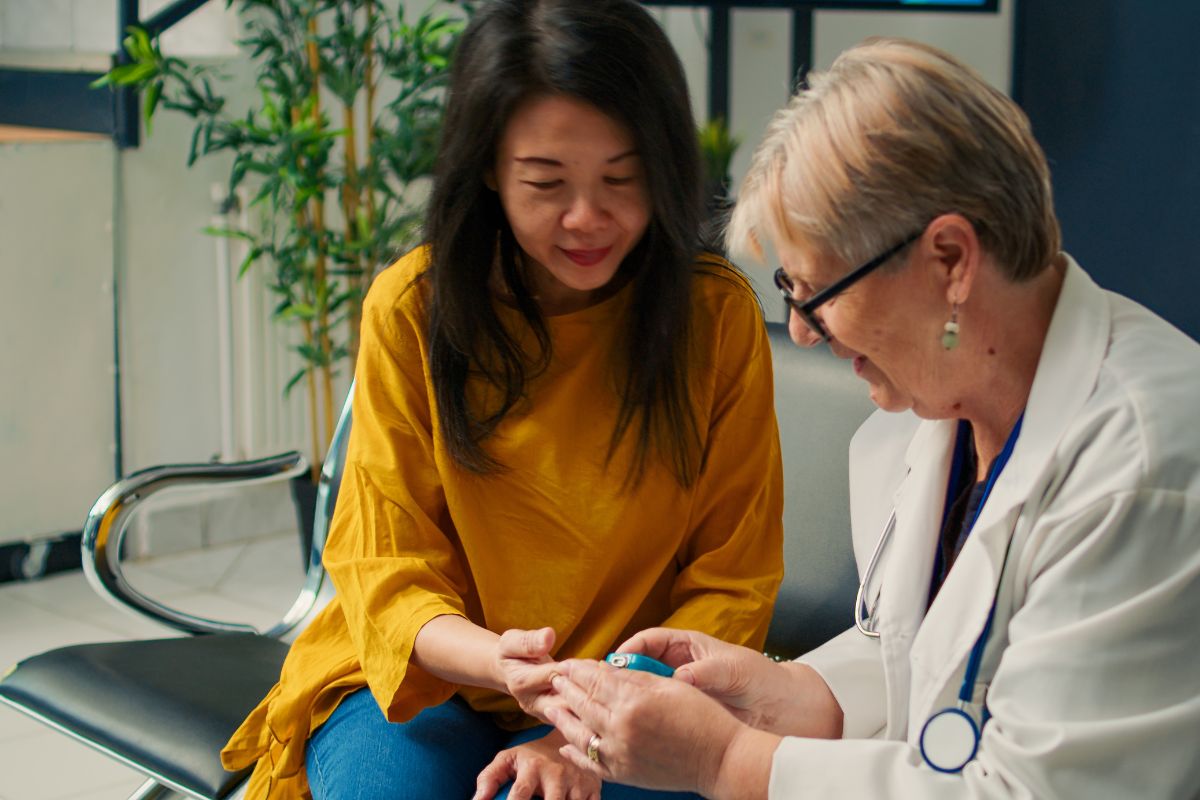
The hormonal changes during menopause can increase your risk of developing diabetes.
Diabetes
At this stage of your life, you probably know someone who has diabetes. Or you may have the condition yourself.
Even if your blood sugar (glucose) levels have been under good control, the menopause journey can make them more difficult to manage.
The number of people with diabetes continues to rise significantly each year in the U.S. The rate is increasing in many other parts of the world as well. India (type 2), China (type 2) and Pakistan (type 1) are among the top 10 countries with regard to the prevalence of the condition.
In the U.S., certain ethnic groups are at a higher risk of diabetes, including within the Asian community.
Diabetes health risks
Diabetes is the number one cause of adult blindness, kidney failure, and lower-limb amputations in the U.S.
Women+ are at greater risk of these complications, as well as depression associated with the condition.
Diabetes also increases the risk of:
- heart disease (4 times more likely in women with diabetes)
- stroke
- impaired hearing
- several cancers – breast, uterus, colon, liver, bladder and pancreas
And diabetes is the 8th leading cause of death.
There is a condition called prediabetes during which blood sugar levels are higher than normal, but not high enough for a diagnosis of type 2 diabetes. However, prediabetes also increases your risk for heart disease and stroke, as well as the chance of evolving to a diagnosis of diabetes.
How diabetes can affect women
Diabetes in women+ can also impact:
- libido (decreases sexual desire)
- comfort and pleasure during penetrative sex (decreased due to greater likelihood of vaginal dryness and decreased blood flow)
- likelihood of UTIs (increased frequency)
All of these issues can also be seen as a result of genitourinary syndrome of menopause (GSM), with intensification of those types of symptoms if you have diabetes.
In addition to the potentially increased challenges in managing blood sugar levels during the menopause journey due to hormonal fluctuations, the same may happen during perimenopausal periods. Your periods may also involve heavier bleeding or last longer, and you may experience intensified food cravings.
Risk factors
Besides race/ethnicity, risk factors for diabetes include:
- First-degree relative with diabetes (type 2)
- Having a personal history of gestational (during pregnancy) diabetes or delivery of a baby who weighs 9 pounds or more
- Prediabetes
- Overweight/obesity with visceral fat (internal fat around the organs)
- Age 45 or older
- Being physically active less than 3 times a week
- Having fatty liver disease
In general, other communities of color are also at higher risk.
It’s important to know that in the Asian community, overweight/obesity as a risk factor for prediabetes and diabetes may be experienced at a lower weight, waist circumference, and percentage body fat than in other racial groups.
Types of diabetes
There are two types of diabetes:
Type 1
In type 1 diabetes, the body experiences an autoimmune process that stops the pancreas from secreting insulin. Insulin is used to take glucose into your cells to be used for energy and also to help the liver store blood sugar for future use.
An estimated 5 – 10% of those with diabetes have type 1. Because no insulin is made, people with the condition need to take insulin daily (unless you are a candidate for a pancreatic islet cell transplantation).
Type 2
In type 2 diabetes, the body produces insulin but doesn’t use it effectively. As a result, it is difficult to keep blood sugar at normal levels.
For individuals with type 2 diabetes, symptoms may take a while to appear. When they do present, they include:
- Urinating more than usual
- Feeling very thirsty or hungry even after eating
- Feeling fatigued
- Blurred vision
- Having frequent infections or slow-healing cuts or sores (e.g., bottom of your feet, toes)
- Weight loss—even though you are eating more (type 1 diabetes)
- Having tingling, pain, or numbness in the hands or feet (type 2 diabetes)
Reducing the risk of a diabetes diagnosis
You can reduce the risk of a diabetes diagnosis with a healthy lifestyle. If you focus on some of these healthy habits, you can also manage menopause symptoms better.
Focus on:
- healthy eating
- healthy weight
- regular physical activity
- getting enough good-quality sleep
- developing coping skills like mindfulness meditation to deal with stress
- avoiding alcohol use (or consuming only at a moderate level
- quitting tobacco use
Additionally, it’s important to get tested for diabetes, especially if you’re at increased risk for developing it.
Managing diabetes
If you’re diagnosed, it’s important to manage it to prevent other health concerns and complications.
Take your medication regularly if it’s needed to control sugar levels.
And don’t forget the need for vaccinations, as your risk for developing infections increases.
Regular visits with your healthcare practitioner and any specialists (like an endocrinologist) that may be needed to help manage your diabetes care and following guidelines are also key to getting the guidance you need.

Mental health in Asian women+
Are you feeling sad, anxious, tense, or feeling like you’re on an emotional rollercoaster during the menopause journey? You may feel this way even if you’ve always been someone who can roll with the changes in life.
Are you experiencing a flare-up of a preexisting history of depression? Is all of this seeming to come out of the blue?
It’s not your imagination! During the menopause journey, women+ are at increased risk of developing depression, anxiety, and bipolar disorder related to the hormonal transition underway.
And with all the other life changes which may also be happening simultaneously, plus everything going on in the world in general, you may be feeling emotional distress often.
What’s the model minority?
To add to the picture, some people also carry the burden of the myth of the “model minority.”
The “model minority” refers to:
“the systematic construction of people of Asian descent as representing successful assimilation into a white dominant society and as ‘living examples of advancement [i.e. academic achievement] in spite of the persistent color line and because of their racial (often coded as cultural) differences.”
Besides lumping all Asian ethnicities into one group and thereby denying the diversity of the community and varying cultures, it also potentially sets up pressure and an expectation of educational perfection and financial success that may not be realistic or feasible depending on an individual’s life circumstances.
For some people, the result can be stress, anxiety, depression, and even suicide.
On a day-to-day basis, members of the Asian community may also experience microaggressions [a comment or action that subtly, consciously, and sometimes unintentionally expresses a prejudiced attitude toward a member of a marginalized group (such as a racial minority)], which is a not infrequent occurrence in communities of color in general.
In the U.S., there may be underreporting of symptoms by individuals when they have interactions with the healthcare system, particularly if they face bias/discrimination/racism or medical gaslighting. And they may also be underdiagnosed when they seek help.
Research by SAMHSA indicates lower utilization of mental health services by the Asian community as a whole.
A study sponsored by the National Asian Women’s Health Organization (NAWHO) found the following in 2001, all of which still appear to play a role in the lives of some Asian women+ even today:
“Conflicting cultural values are impacting Asian-American women’s sense of control over their life decisions.
Feeling responsible yet unable to meet biased and unrealistic standards set by families and society contributes to low self-esteem among Asian-American women.
Asian-American women witness depression in their families but have learned from their Asian cultures to maintain silence on the subject.
Asian-American women fear stigma for themselves, but more so for their families.”
If you’re feeling a mix of emotions, a sense of uncertainty, anger, or even rage, remember you are not alone. The hormonal transition of the menopause journey can be disruptive.
There are many options to address your needs, which vary depending on your particular situation and the severity of your symptoms.
The most important thing is to recognize that it’s OK not to be OK and to seek help and support to make a change for the better!
Call 9-8-8

Osteoporosis
Osteoporosis means is a bone disease that develops when:
- the structure and strength of your bone change and/or
- bone mineral density and bone mass decrease
As you age, your body loses more bone mass than it creates. And for those on the menopause journey, the drop in estrogen levels can also contribute to bone loss.
Osteoporosis weakens your bones and increases your risk of breaking a bone even after a minor fall or bump. Every 3 seconds, someone breaks a bone worldwide because of osteoporosis.
Half of post-menopausal women+ will have osteoporosis.
Source: Endocrine Society
Despite the prevalence of osteoporosis, 80% of patients are undiagnosed and untreated even after a fracture. That’s why it’s important to get screened and understand risk factors.
Signs of osteoporosis
Osteoporosis commonly shows up as:
- Loss of height (just over an inch).
- Curved or stooped upper back.
- You may also experience back pain.
- Bone fracture (hip, wrist, spine).
Risk factors
Osteoporosis can be a concern at any stage of the menopause journey, but it’s common in post-menopause, with 50% of women+ having it at that point of the menopausal transition.
Risk factors include:
- Family history
- Gender (80% of those with osteoporosis are women.)
- Menopause (up to 20% bone loss during this time)
- Specific menopause symptoms like hot flashes
- Hysterectomy
- Early menopause
- Age
- Previous break due to a minor fall
- Medications (such as certain antidepressants, steroid hormones, diabetes, thyroid, proton pump inhibitors, certain types of chemotherapy)
- Other diseases (such as rheumatoid arthritis, GI conditions like celiac disease, COPD, asthma, endocrine disorders, immobility, certain cancers like multiple myeloma, and dementia)
- Cancer that spreads to the bone
- Excessive alcohol (drinking two or more glasses of alcohol a day increases the risk of fracture)
- Smoking
- Low body mass index (below 19 is a significant risk factor)
- Poor nutrition, malnutrition, and eating disorders
- Low calcium intake (e.g., those who avoid dairy products due to lactose intolerance or milk sensitivity, vegans)
- Vitamin D deficiency
- Physical inactivity
- Frequent falls
- Race
Health inequities
Osteoporosis is more likely to occur in white and Asian women, with the highest fracture rates in white women.
| Race | Have Osteoporosis |
|---|---|
| Asian | 20% |
| White | 20% |
| Native American | 12% |
| Hispanic/Latina | 10% |
| Black | 5% |
Sources: Bone Health & Osteoporosis Foundation & Osteoporosis in Females – StatPearls [Internet]
Learn more about screening and treatment of osteoporosis and check out 28 exercises you can do at home to help prevent and manage it saftely.
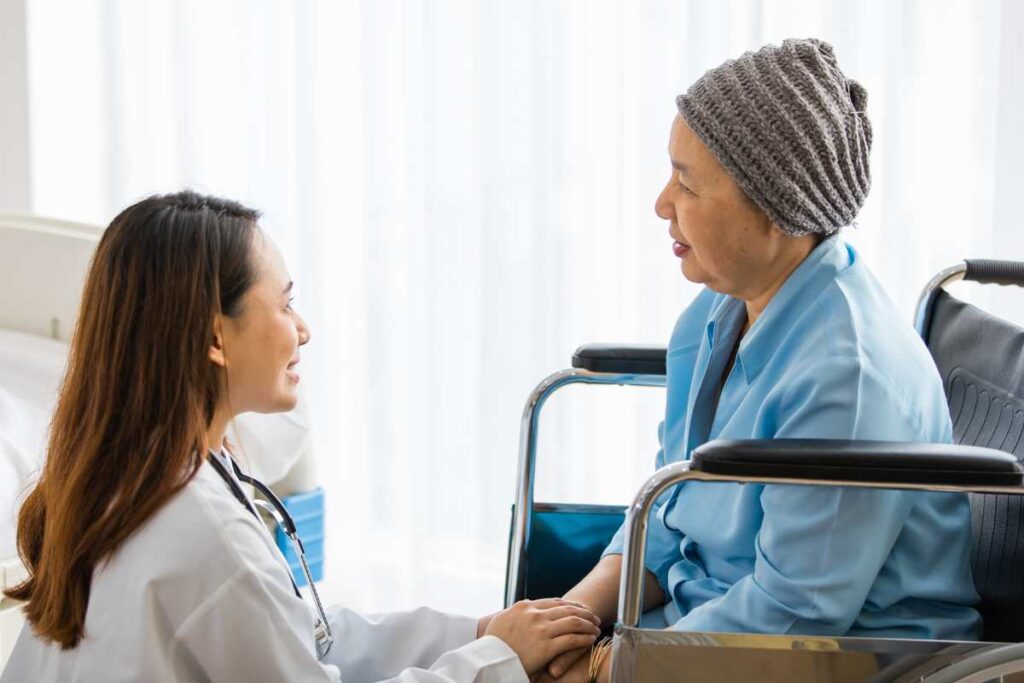
Indian, Pakistani, and Japanese women+
Source: American Cancer Society
Cancer
Overall, the Asian community as a whole has a lower incidence of cancer than those who are white. However, cancer is still very much an area of concern, particularly when (1) so many types are due to risks related to unhealthy lifestyles and (2) screening can detect many cancers at an early stage, which typically offers the greatest chance at cure.
For Asian women+ as a group, the top 3 causes of cancer death (not including skin cancer) – breast, lung, and colorectal (CRC) – are the same as for women as a whole in the U.S. However, there are also cancers which are a greater threat for Asian women+ or are seen at a higher rate.
According to the Rogel Cancer Center at the University of Michigan, the Asian population has lower rates of cancer screening, especially in the Korean community. With cancer, early diagnosis is key.
1. Breast
There is a great deal of variability when it comes to breast cancer in Asian women+. Those at greatest risk are those who are:
- Korean
- Vietnamese
- Filipina
- Chinese
- South Asian
Your ethnicity, where you are born, and where you live matter. As a group, Asian women who immigrate and have lived ≥ 50% of their life in the United States have been found to be at higher risk, according to the CDC.
However, in California, Filipina and Chinese women born in the U.S. were found to be at greater risk than those born outside of the U.S.
Post-menopausal overweight/obesity, a risk factor for breast cancer, had a greater association in Asian women than other racial groups.
Unfortunately, the incidence rate of breast cancer is increasing in Asian women+. And they are more likely to develop it at a younger age and to have a more aggressive form (HER-2 positive) of the cancer, which is also more likely to grow quickly, spread to the lymph nodes and brain, and come back after treatment.
HER-2 positive breast cancer is also less likely to respond to standard breast cancer chemotherapy but may respond to targeted therapy.
Breast cancer signs and symptoms
Signs and symptoms of breast cancer include:
- A breast lump
- Breast or nipple pain
- Nipple retraction (turning inwards) or discharge
- Skin changes on the breast such as reddening, thickening, dryness or flaking
- Breast swelling (full or partial)
- Swollen lymph nodes
Screening
Thankfully, breast cancer screening is possible, which increases the chance of detecting a cancer at an early stage and a greater chance of cure. The 5-year survival rate for Stage 1 breast cancer is 99%, according to the American Cancer Society.
Current guidelines suggest for those at average risk to start getting mammograms at age 40. However, be sure to check with your healthcare practitioner for guidance based on your personal situation, as age, frequency, and type of screening may be different in your case.
Check out the CDC’s National Breast and Cervical Cancer Early Detection Program to see if you are eligible.
In the Asian community, it is seen more often if you are Hmong, Laotian, Vietnamese, or Cambodian.
And Vietnamese women experience the highest U.S. rates of cervical cancer.
2. Cervical
Although most types of cervical cancer are most commonly diagnosed between the ages of 35 and 44, 20% of people who develop it are actually 65 or older, according to the American Cancer Society.
Symptoms you might experience are:
- Abnormal vaginal bleeding (e.g., between your periods, after sex, after menopause)
- Unusual vaginal discharge
- Pain during sexual intercourse.
- Pelvic pain
HPV infection is the most common cause of cervical cancer.
Risk factors for cervical cancer include:
- Family history of cervical cancer
- Becoming sexually active at a young age (especially younger than 18 years old)
- Having many sexual partners or a high-risk partner (e.g., has many sexual partners, has an HPV infection)
- Having HIV
- Smoking
- History of having a chlamydia infection
- History of full-term pregnancy prior to age 20 or history of 3 or more full-term pregnancies
- Long-term use of birth control pills
- DES exposure
- Diet low in fruit and vegetables
Check out the CDC’s National Breast and Cervical Cancer Early Detection Program to see if you are eligible.
Check with your healthcare practitioner for guidance on screening (Pap smear and HPV testing) based on your personal situation. The age, frequency, and type of screening may be different in your particular case.
The rate of colon cancer in the Asian community is reported to be highest in the Japanese population.
Sources: Asia-Pacific Journal of Clinical Oncology
3. Colorectal (CRC)
In the U.S. population, colorectal cancer is on the rise in people younger than 55 and now accounts for 20% of those with the condition. In this age group most of the cancers are located in the rectum or left-side of the colon, increasing the likelihood of being found on screening.
Additionally, rates in the Asian community as a whole have been declining, except for those who are Korean. The Korean population also has the lowest CRC screening rates across Asian ethnic groups.
Risk factors include:
- Family history of CRC
- Vitamin D deficiency
- Alcohol consumption
- Inflammatory bowel disease (IBD – Crohn’s disease and ulcerative colitis)
- Hereditary CRC syndromes (e.g., Lynch syndrome)
- Obesity
- Abdominopelvic radiation
- Having cystic fibrosis
- Diabetes
- Consumption of red and processed meats
There are several options for CRC screening, but colonoscopy remains the “gold standard.”
Screening makes a difference. The 5-year survival rate for colon cancer in those who were diagnosed in Stage 1 is 91%, as reported by the American Cancer Society.
Current guidelines for those at average risk recommend the start of screening at age 45. It’s important to seek guidance from your healthcare practitioner for your personal situation, as age, frequency, and best screening approach may be different in your particular case.
Learn more about colon cancer in Chinese, Hmong, Korean, and Vietnamese.

Infection-related cancers
Cancers with links to an infectious agent are more common in the Asian community. Examples include:
- HPV-related cervical cancer – Vietnamese women
- Helicobacter pylori-related gastric (stomach) cancer – in the U.S., seen more often in those who are Korean or Japanese than other Asian ethnicities; rates 2.5 times higher in Korean women than those who are white
- Liver and bile duct cancers – These two cancers combined account for 15 – 25% of cancer deaths in Chinese, Vietnamese, and Korean individuals.
1. Gastric (stomach)
Gastric cancer tends to grow slowly over the course of years and is usually asymptomatic in the early stages. Therefore, unless certain actions are taken, it is usually diagnosed at an advanced stage.
If caught during stage 1, the 5-year survival is 70% vs. 7% for those diagnosed in stage 4.
Symptoms include:
- Feeling full quickly when eating
- Poor appetite
- Nausea, vomiting, indigestion
- Pain or discomfort in the upper part of the abdomen
- Unintentional weight loss
Risk factors include:
- Helicobacter pylori infection
- Family history of gastric cancer
- Immigration from a country where gastric cancer rates are high (e.g., Korea, Japan, China, Vietnam, and Mongolia)
- Obesity
- Diabetes
- Consumption of salt and salt-preserved food
- Diet high in fried food, processed meat and smoked fish, and red meat plus low consumption of fruit and vegetables, milk, and vitamin A
- Alcohol consumption
- Smoking
- Ebstein-Barr virus infection (EBV)
- Gastric surgery
- Atrophic gastritis
- Consumption of nitrates
- Prior radiation of the abdomen related to treatment of other types of cancer
- CDH1, BRCA1, and BRCA2 gene mutations
- Hereditary cancer syndromes (e.g., Lynch syndrome, Peutz-Jeghers syndrome)
- Blood type A
- Gastric polyps,
- Gastric ulcer
- Pernicious anemia
Screening for gastric cancer
Although gastric cancer is rare in general in the U.S. (1.5% of new cancers), across the globe, it is the 5th most common type of cancer and the 2nd most common cause of cancer deaths, with approximately 1 million new cases each year.
In countries where gastric cancer is common, certain actions are taken to reduce the likelihood of developing gastric cancer or to catch it early if someone already has it. They include:
- Proactive testing for H. pylori and treatment if found positive
- Upper endoscopy with biopsy
- Radiologic imaging
- Biomarker testing
In the U.S., screening of those at average risk is not routinely performed. However, if you are at high risk (e.g., first-degree relative with gastric cancer history, personal history of gastric surgery, being an immigrant from a country with a high incidence), speak with your healthcare practitioner about being screened.
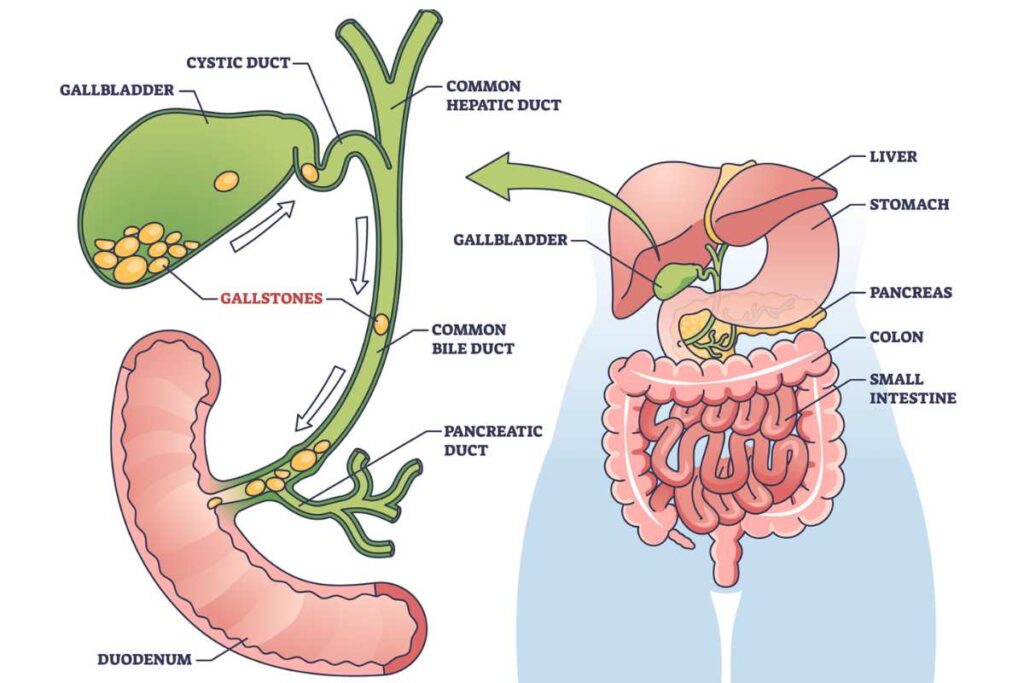
2. Liver (hepatic) and bile duct (cholangiocarcinoma)
Like gastric cancer, liver and bile duct cancers are more common across the globe than in the U.S. For example, liver cancer is the 6th most common type overall, and the 9th most common in women.
Death from liver cancer in the U.S. is more common in those of Laotian, Chinese, Vietnamese, and Cambodian ancestry.
And bile duct cancer is found most commonly in people who are East Asian (and South American).
Liver cancer
Liver cancer begins in liver cells called hepatocytes.
The most common type of liver cancer is hepatocellular carcinoma (HCC). And bile duct cancer accounts for 10 – 20% of liver cancers.
Risk factors for liver cancer include:
- conditions that can lead to cirrhosis (e.g., chronic hepatitis B or C, heavy alcohol use, fatty liver, primary biliary cirrhosis)
- obesity
- diabetes
- aflatoxins (a type of fungus that can contaminate peanuts, ground nuts, wheat, soybeans, corn, and rice)
- hemochromatosis
- anabolic steroids
Bile duct cancer
Bile duct cancer (intrahepatic cholangiocarcinoma) begins in cells that line the bile ducts, which are tubes in the liver that carry bile from the gallbladder to the intestines.
Bile aids in digestion. It is secreted by the liver and is stored in the gallbladder.
Risk factors for bile duct cancer include:
- infection with the parasitic liver fluke
- bile duct stones
- ulcerative colitis
- primary sclerosing cholangitis
- Caroli’s syndrome
- exposure to chemicals like dioxins, asbestos polychlorinated biphenyls (PCBs), nitrosamines, radon, or Thorotrast contrast dye (not used since the 1950s)
Symptoms
Liver and bile duct cancer have several symptoms in common. They include:
- Jaundice (yellowing of the skin and eyes), which may be accompanied by itching
- Nausea and vomiting
- Loss of appetite
- Abdominal pain
- Unintentional weight loss
With liver cancer there can also be an enlarged liver and/spleen on abdominal exam and/or fluid (ascites) in the abdominal cavity. Dark urine and light-colored or greasy stools are also seen in bile duct cancer.
Preventing these cancers
Thankfully, several of the risk factors are ones over which you have some degree of control. There are tests available to detect both hepatitis B and C. If you are found to be negative for the virus, there is a vaccine series you can take to prevent hepatitis B (80 – 10% effective), and if you are found to be positive, there is a medication regimen that has a high cure rate (98%) for hepatitis C!
Anabolic steroids (used by athletes to build muscle mass) and alcohol can be avoided altogether.
As is frequently the case with regard to many conditions and several cancers, living a healthy lifestyle can help reduce the risk of contributory factors like obesity, diabetes, and fatty liver.
And remember, taking steps to live a healthy lifestyle can also help (1) reduce the severity and frequency of menopausal symptoms and (2) reduce the chance of developing many of the physical and mental health conditions for which the risk increases due to the hormonal changes which occur during this stage of life!

Metabolism of medications
Certain genetic variants seen in the Asian community can impact how well certain medications are metabolized (processed), which in turn can affect how well a drug may work, the type and severity of side effects [e.g., Stevens‒Johnson syndrome (SJS) – a drug reaction marked by flu-like symptoms, followed by a painful, blistering rash that spreads, causing the top layer of skin to die and shed], and differences with regard to adverse drug interactions.
These differences are seen more commonly in those of this descent:
- South Asian
- Bangladesh
- Bhutan
- India
- Pakistan
- Nepal
- Sri Lanka
- Afghanistan
- Maldives
- East Asian
- China
- Taiwan
- Hong Kong
- Japan
- Korea
- Macau
- Mongolia
- North Korea
- South Korea
- Taiwan
Some have proposed that differences in eating patterns, use of herbal medications, and higher consumption of green tea may also contribute to the picture.
Some of the medications include:
- Anti-depressants – SSRIs (increased risk of abnormal heart rhythm) and tricyclics (potential suboptimal response)
- Anti-fungal – voriconazole (decreased effectiveness, increased risk of rash, visual disturbances, toxic effect on liver and nervous systems, inflammation of the connective tissues surrounding bones)
- Anti-psychotics – haloperidol, clozapine, quetiapine, aripiprazole, and lurasidone (reach higher drug levels in the blood for a given dose)
- Blood thinners – clopidogrel (reduces effectiveness), warfarin (increases blood thinning effect)
- Cancer medication – Tamoxifen (lower blood drug concentrations and effectiveness), thiopurines (increased risk of bone marrow suppression)
- Gout medication – allopurinol (increased risk of SJS and TENS)
- Seizure medication – carbamazepine, oxcarbazepine, phenytoin (increased risk of SJS and TENS – toxic epidermal necrolysis: a life-threatening skin disorder marked by blistering and peeling of the skin)
| Drug Category | Community Affected |
|---|---|
| Anti-Depressants | East Asian |
| Anti-Fungal | East Asian |
| Antipsychotics | East Asian |
| Blood Thinners | East Asian |
| Cancer Medication | East Asian |
| Gout Medication | East and Central Asian |
| Seizure Medication | East and Central Asian |
Given the potential impact on drug treatment regimens and your health, it’s important to have a discussion with your healthcare practitioner when medications are prescribed and to ask if you need pharmacogenomic testing before the start of certain medications to determine if you have any of the applicable genetic variants.
Pharmacogenomic testing “allows for the detection of genomic factors linked to differences in drug response before treatment, ensuring that the benefit of a medication is maximized without the unintended consequences of ADRs.” (ADRs = adverse drug reactions)
Here is a drug interaction checker that may be helpful during your conversation with your healthcare practitioner.

You can make a change for the better!
While the menopause journey can be challenging both physically and emotionally, investing time in learning as much as you can about this stage of your life, as well as risks and health conditions that may come into play, will reap benefits both now and in the future. As they say, knowledge is power.
Living a healthy lifestyle and learning self-advocacy skills to get the care you need and deserve will go a long way in helping to manage your menopausal symptoms and optimize your overall health and well-being in the long term.
Resources
- American Cancer Society
- American Diabetes Association
- American Liver Foundation
- Take Charge of Your Diabetes:
- Carb Counting and Beyond: Navigating Nutrition with Diabetes
- Asian Mental Health Collective
- 17 Mental Health Resources For Asian Americans and Pacific Islanders
- southasiantherapists.org
- Asian American Psychological Association (AAPA)
- AAPA Find a Provider
- Provider Directories
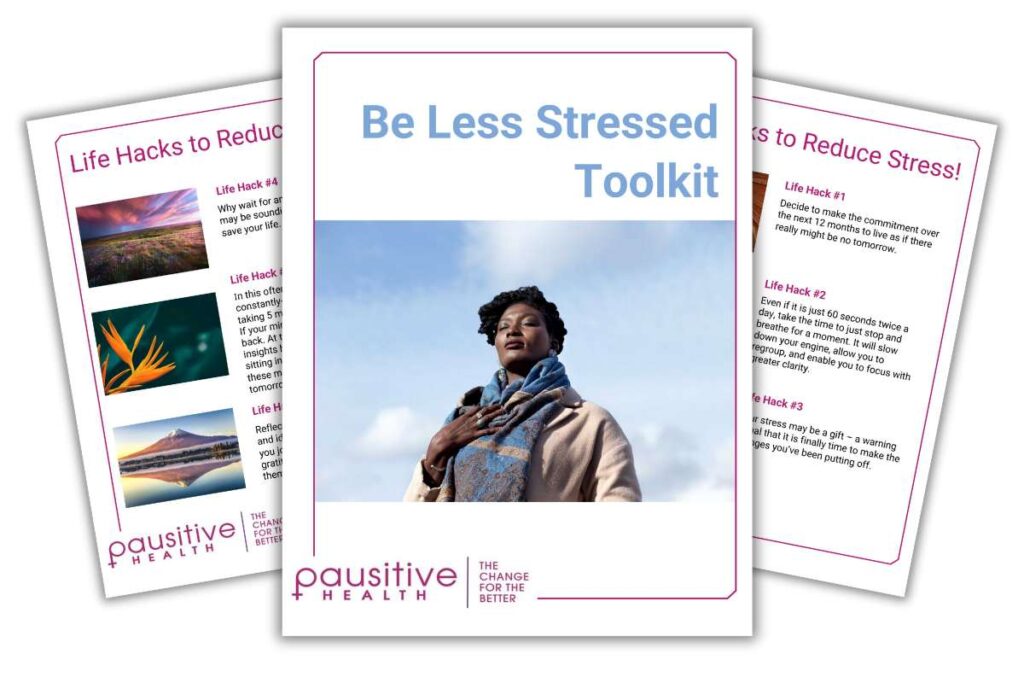
Be Less Stressed
Feeling stressed or overwhelmed? Learn life hacks to reduce stress with the Be Less Stressed toolkit.
"*" indicates required fields
In general, women's health is woefully underfunded.
Most medical and scientific research has historically focused on white males.
Research for communities of color (as well as the LGBTQIA+ community), is woefully inadequate.
More needs to be done to ensure members of these communities are included in research and clinical trials.The research we do have often does not take into account the diversity that exists and the health and healthcare differences that may be seen with regard to people:
There may also be inconsistency from study to study with regard to how participants are grouped (e.g., based on language, ethnicity, and immigration status), so it can become more difficult to glean insights or know which study is more accurate if conclusions differ.
And it can be challenging to find studies regarding Hispanic women+/Latinas specifically vs. the entire community as whole. All of that to say, the research, though important and valuable, is sometimes not as detailed and specific as we would like because the data may not yet be available.
pausitive health is an inclusive digital menopause community that understands every menopause journey is unique, and being a woman+ of color can be one factor that makes it unique. That's why we've built a library of content for women of color and a prescription for health series that focuses on improving health and well-being for women of color.+
Your health and well-being is critical during menopause, and there's no better time than this journey to focus on taking care of yourself.
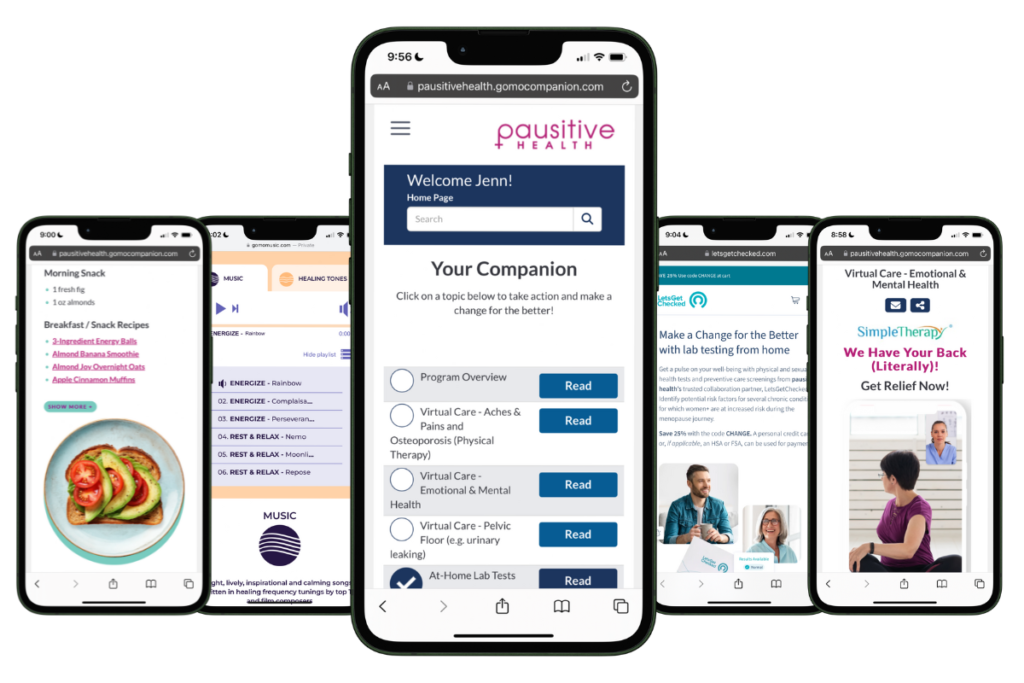
Free Support
For Your Menopause Journey!
Only available for a limited time!
Access a one-stop menopause journey digital destination that provides personalized text messages that focus on educational topics you select and offers many other features such as a diet assessment with recommendations, solutions from collaboration partners to address menopausal aches and pains (the musculoskeletal syndrome of menopause – MSM), pelvic floor issues, virtual care, lifestyle tools, and a supportive community.
Asian American Health | Office of Minority Health
Defining Diaspora: Asian, Pacific Islander, and Desi Identities | California State University San Marcos
Torre LA, Sauer AMG, Moon S. Chen MS, et.al. Cancer statistics for Asian Americans, Native Hawaiians, and Pacific Islanders, 2016: Converging incidence in males and females. CA: A Cancer Journal for Clinicians, Volume 66 (3) May/June 2016, p. 182-202.
Im EO, Seung Hee Lee, Chee W. Subethnic differences in the menopausal symptom experience of Asian American midlife women. J Transcult Nurs. 2010 Apr;21(2):123-33. doi: 10.1177/1043659609357639. PMID: 20220032; PMCID: PMC2838208
Fang DM, Lee S, Stewart S, Ly MY, Chen MS Jr. Factors associated with pap testing among Hmong women. J Health Care Poor Underserved. 2010 Aug;21(3):839-50. doi: 10.1353/hpu.0.0338. PMID: 20693730; PMCID: PMC4280850.
Vicks WS, Lo JC, Guo L, Rana JS, Zhang S, Ramalingam ND, Gordon NP. Prevalence of prediabetes and diabetes vary by ethnicity among U.S. Asian adults at healthy weight, overweight, and obesity ranges: an electronic health record study. BMC Public Health. 2022 Oct 22;22(1):1954. doi: 10.1186/s12889-022-14362-8. PMID: 36273116; PMCID: PMC9587616.
Asian American, Native Hawaiian and Pacific Islander Heritage Month: May 2023 | United States Census (2023)
Appel HB, Huang B, Ai AL, Lin CJ. Physical, behavioral, and mental health issues in Asian American women: results from the National Latino Asian American Study. J Womens Health (Larchmt). 2011 Nov;20(11):1703-11. doi: 10.1089/jwh.2010.2726. Epub 2011 Jul 21. PMID: 21777144; PMCID: PMC3253389.
Mental and Behavioral Health – Asian Americans | Office of Minority Health
Budiman A and Ruiz NG. Key facts about Asian Americans, a diverse and growing population. Pew Research Center, April 29, 2021.
Elflein J. Obesity rates for adults in the United States in 2022, by race/ethnicity. Statista. November 1, 2023.
How do diabetes rates vary by country? |Healthline Media
Hispanic and Asian subgroups are at higher risk for diabetes | Centers for Disease Control and Prevention
Diabetes and Women | Centers for Disease Control and Prevention
Diabetes and Hearing Loss | Centers for Disease Control and Prevention
Giovannucci E, Harlan DM, Archer MC, Bergenstal RM, Gapstur SM, Habel LA, Pollak M, Regensteiner JG, Yee D. Diabetes and cancer: a consensus report. Diabetes Care. 2010 Jul;33(7):1674-85. doi: 10.2337/dc10-0666. PMID: 20587728; PMCID: PMC2890380.
Vicks WS, Lo JC, Guo L, Rana JS, Zhang S, Ramalingam ND, Gordon NP. Prevalence of prediabetes and diabetes vary by ethnicity among U.S. Asian adults at healthy weight, overweight, and obesity ranges: an electronic health record study. BMC Public Health. 2022 Oct 22;22(1):1954. doi: 10.1186/s12889-022-14362-8. PMID: 36273116; PMCID: PMC9587616.
Diabetes Infographic | Centers for Disease Control and Prevention
Diabetes Tests | Centers for Disease Control and Prevention
American Diabetes Association Professional Practice Committee. Introduction and Methodology: Standards of Care in Diabetes-2024. Diabetes Care. 2024 Jan 1;47(Supplement_1):S1-S4. doi: 10.2337/dc24-SINT. PMID: 38078587; PMCID: PMC10725799.
Walton J and Truong M. (2023) A review of the model minority myth: understanding the social, educational and health impacts. Ethnic and Racial Studies, 46:3, 391-419, DOI: 10.1080/01419870.2022.2121170
Lim HA and Im H. It’s the little “stings”: Racial microaggressions against Asian American customers in retail and their effects. Journal of Retailing and Consumer Services, Volume 71, March 2023, 103194. DOI: https://doi.org/10.1016/j.jretconser.2022.103194
Home | 988 Suicide & Crisis Lifeline
Bone Health and Postmenopausal Women | Endocrine Society
Epidemiology of Osteoporosis and Fragility Fractures | International Osteoporosis Foundation
What is Osteoporosis? | International Osteoporosis Foundation
Shoback D, Rosen C, Black D, Cheung A, Murad H, Eastell R. Pharmacological Management of Osteoporosis in Postmenopausal Women: An Endocrine Society Guideline Update. The Journal of Clinical Endocrinology & Metabolism. 2020. Volume 105, Issue 3, Pages 587-594, https://doi.org/10.1210/clinem/dgaa048.
Risk Factors | International Osteoporosis Foundation
Cauley JA. Defining ethnic and racial differences in osteoporosis and fragility fractures. Clin Orthop Relat Res. 2011 Jul;469(7):1891-9. doi: 10.1007/s11999-011-1863-5. PMID: 21431462; PMCID: PMC3111798.
What Women Need to Know | Bone Health & Osteoporosis Foundation
Keen M, Kumar Reddy Reddivari A. Osteoporosis in Females. StatPearls [Internet]
Torre LA, Sauer AMG, Chen MS, et. al. Cancer statistics for Asian Americans, Native Hawaiians, and Pacific Islanders, 2016: Converging incidence in males and females. CA: A Cancer Journal for Clinicians, Volume 66, Issue3, May/June 2016, p. 182-202.
Gomez SL, Quach T, Horn-Ross PL, et al. Hidden breast cancer disparities in Asian women: disaggregating incidence rates by ethnicity and migrant status. Am J Public Health 2010;100(suppl 1):S125–S131.
Asian Americans and cancer | Rogel Cancer Center University of Michigan Health
Gomez SL, Quach T, Horn-Ross PL, Pham JT, Cockburn M, Chang ET, Keegan TH, Glaser SL, Clarke CA. Hidden breast cancer disparities in Asian women: disaggregating incidence rates by ethnicity and migrant status. Am J Public Health. 2010 Apr 1;100 Suppl 1(Suppl 1):S125-31. doi: 10.2105/AJPH.2009.163931. Epub 2010 Feb 10. PMID: 20147696; PMCID: PMC2837454.
Morey BN, Gee GC, von Ehrenstein OS, Shariff-Marco S, Canchola AJ, Yang J, et al. Higher Breast Cancer Risk Among Immigrant Asian American Women Than Among US-Born Asian American Women. Prev Chronic Dis 2019;16:180221. DOI: http://dx.doi.org/10.5888/pcd16.180221external icon.
Bissell MCS, Kerlikowske K, and Sprague BL, et. al. Breast Cancer Surveillance Consortium. Breast Cancer Population Attributable Risk Proportions Associated with Body Mass Index and Breast Density by Race/Ethnicity and Menopausal Status. Cancer Epidemiol Biomarkers Prev. 2020 Oct;29(10):2048-2056. doi: 10.1158/1055-9965.EPI-20-0358. Epub 2020 Jul 29. PMID: 32727722; PMCID: PMC7541499.
Timing G and Heller SL. Health Disparity and Breast Cancer Outcomes in Asian Women. Radiographics, Vol. 42, No. 7, Sep 2, 2022 https://doi.org/10.1148/rg.220074
First clinical trial testing a prevention for breast cancer metastasis to the brain yields encouraging results | National Cancer Institute
What is HER2-Positive Breast Cancer | Breast Cancer Research Foundation
Stage 1 Breast Cancer Overview | National Breast Cancer Foundtion, Inc.
Survival Rates for Breast Cancer | American Cancer Society
New Mammogram Guidelines: What Women Should Know | Yale Medicine
Find a Screening Program Near You | Centers for Disease Control and Prevention
Iqbal N, Iqbal N. Human epidermal growth factor receptor 2 (HER2) in cancers: Overexpression and therapeutic implications. Mol Biol Int. 2014:852748. doi:10.1155/2014/852748
Jenkins S, Zhang W, Steinberg SM, et.al. Phase I Study and Cell-Free DNA Analysis of T-DM1 and Metronomic Temozolomide for Secondary Prevention of HER2-Positive Breast Cancer Brain Metastases. Clin Cancer Res. 2023 Apr 14;29(8):1450-1459. doi: 10.1158/1078-0432.CCR-22-0855. PMID: 36705597; PMCID: PMC10153633.
Torre LA, Sauer AM, Chen MS Jr, Kagawa-Singer M, Jemal A, Siegel RL. Cancer statistics for Asian Americans, Native Hawaiians, and Pacific Islanders, 2016: Converging incidence in males and females. CA Cancer J Clin. 2016 May;66(3):182-202. doi: 10.3322/caac.21335. Epub 2016 Jan 14. PMID: 26766789; PMCID: PMC5325676.
Key Statistics for Cervical Cancer | American Cancer Society
Risk Factors for Cervical Cancer | American Cancer Society
Find a Screening Program Near You | Centers for Disease Control and Prevention
Gu M and Thapa S. Colorectal cancer in the United States and a review of its heterogeneity among Asian American subgroups. Asia-Pacific Journal of Clinical Oncology, Volume 16, Issue 4, August 2020, p 193-200.
Flood DM, Weiss NS, Cook LS, Emerson JC, Schwartz SM, Potter JD. Colorectal cancer incidence in Asian migrants to the United States and their descendants. Cancer Causes Control. 2000 May;11(5):403-11. doi: 10.1023/a:1008955722425. PMID: 10877333.
Colorectal Cancer Prevention (PDQ®) – Patient Version | National Cancer Institute
About Colorectal Cancer | Cystic Fibrosis Foundation
Survival Rates for Colorectal Cancer | American Cancer Society
Educational Materials | Colon Cancer Coalition
Thompson CA, Gomez SL, Hastings KG, et. al. The Burden of Cancer in Asian Americans: A Report of National Mortality Trends by Asian Ethnicity. Cancer Epidemiol Biomarkers Prev. 2016 Oct;25(10):1371-1382. doi: 10.1158/1055-9965.EPI-16-0167. PMID: 27694108; PMCID: PMC5218595.
Stomach Cancer Survival Rates | American Cancer Society
Shin WS, Xie F, Chen B, Yu P, Yu J, To KF, Kang W. Updated Epidemiology of Gastric Cancer in Asia: Decreased Incidence but Still a Big Challenge. Cancers (Basel). 2023 May 6;15(9):2639. doi: 10.3390/cancers15092639. PMID: 37174105; PMCID: PMC10177574.
Key Statistics About Stomach Cancer | American Cancer Society
Home | No Stomach for Cancer
Tests for Stomach Cancer | American Cancer Society
The Case for Biomarker Testing in Gastroesophageal Cancer | Medscape
Li DY, VoPham T, Tang MC, Li CI. Disparities in Risk of Advanced-Stage Liver Cancer and Mortality by Race and Ethnicity. J Natl Cancer Inst. 2022 Sep 9;114(9):1238-1245. doi: 10.1093/jnci/djac097. PMID: 35552746; PMCID: PMC9468287.
Baria K, De Toni EN, Binbing Yu B, et.al. Worldwide Incidence and Mortality of Biliary Tract Cancer. Gastro Hep Advances 2022;1:618–626.
Khan AS, Dageforde LA. Cholangiocarcinoma. Surg Clin North Am. 2019 Apr;99(2):315-335. doi: 10.1016/j.suc.2018.12.004. Epub 2019 Feb 10. PMID: 30846037.
Manns, MP and Maasoumy B. Breakthroughs in hepatitis C research: from discovery to cure. Nat Rev Gastroenterol Hepatol 19, 533–550 (2022). https://doi.org/10.1038/s41575-022-00608-8
Mohitosh Biswas, Pimonpan Jinda & Chonlaphat Sukasem (2023). Pharmacogenomics in Asians: Differences and similarities with other human populations, Expert Opinion on Drug Metabolism & Toxicology, 19:1, 27-41, DOI: 10.1080/17425255.2023.2178895
Lo C, Nguyen S, Yang C, Witt L, Wen A, Liao TV, Nguyen J, Lin B, Altman RB, Palaniappan L. Pharmacogenomics in Asian Subpopulations and Impacts on Commonly Prescribed Medications. Clin Transl Sci. 2020 Sep;13(5):861-870. doi: 10.1111/cts.12771. Epub 2020 Apr 13. PMID: 32100936; PMCID: PMC7485947.
Anderson KE. Influences of diet and nutrition on clinical pharmacokinetics. Clin Pharmacokinet. 1988; 14(6): 325-346.
Lo C, Nguyen S, Yang C, Witt L, Wen A, Liao TV, Nguyen J, Lin B, Altman RB, Palaniappan L. Pharmacogenomics in Asian Subpopulations and Impacts on Commonly Prescribed Medications. Clin Transl Sci. 2020 Sep;13(5):861-870. doi: 10.1111/cts.12771. Epub 2020 Apr 13. PMID: 32100936; PMCID: PMC7485947.
Lin S-K. Racial/Ethnic Differences in the Pharmacokinetics of Antipsychotics: Focusing on East Asians. Journal of Personalized Medicine. 2022; 12(9):1362. https://doi.org/10.3390/jpm12091362
Loucks CM, Groeneweg G, Roy C, Lee DK, Rieder MJ, Lebel D, Ito S, Ross CJ, Carleton BC. Pharmacogenomic testing: Enhancing personalized medication use for patients. Can Fam Physician. 2020 Apr;66(4):241-243. PMID: 32273406; PMCID: PMC7145138.
Jessica Walton & Mandy Truong (2023) A review of the model minority myth: understanding the social, educational and health impacts, Ethnic and Racial Studies, 46:3, 391-419, DOI: 10.1080/01419870.2022.2121170
Drug Interaction Checker | Drugs.com
Home | American Cancer Society
Home | American Diabetes Association
Home | American Liver Foundation
Promoting Oral Health, Kidney Disease, Healthy Eyes, Promoting Ear Health, Healthy Feet | Centers for Disease Control and Prevention
Carb Counting and Beyond: Navigating Nutrition with Diabetes | T1D Exchange
Find a Therapist Nearby | Asian Mental Health Collective
17 Mental Health Resources for Asian Americans and Pacific Islanders | Verywell Mind
Find a South Asian Therapist Near You | South Asian Therapists.org
Home and Find Providers Near You | Asian American Psychological Association
Directories | MedlinePlus


